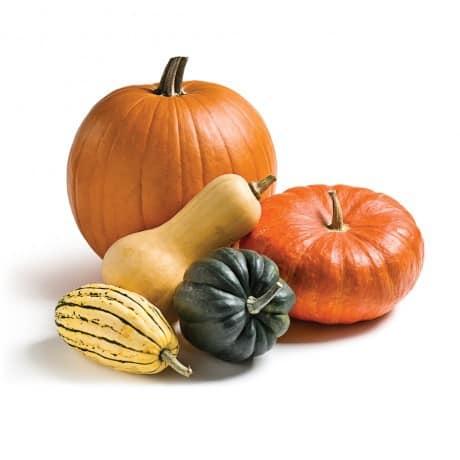
The pumpkin è, on balance, one of those foods mentioned we know less than we should.
Knowing all the characteristics of the pumpkin, we can find that it deserves to be appreciated better, planted in the garden and eaten more often. And the reason is soon said: almost all of its parts are edible, in different ways.
In supermarkets and grocery stores we are used to buying pumpkin fruit, in different shapes and colors depending on the variety.
More rarely we consume the seeds as a snack or as a supplement, and even more rarely we find zucchini flowers, often in polystyrene trays to be stored longer. That's all? Let's take a look together.
The fruit of the pumpkin
Il pumpkin fruit, called simply gourd as the whole plant, it is more worn apart and there is little to say: everyone knows that it must be opened, peeled, cleaned of seeds and cooked.
Boiled, stew, fried, grilled, steamed, in sweets, With the pasta, with the ricein mash, in the soups... land possibilities are truly innumerable.
The pumpkin fruit is rich in beta-carotene, especially in its orange varieties (there are also white and yellow ones), and zeaxanthin.
Ha very few calories, and contains interesting polyphenols among which it is worth mentioning lutein, cryptoxanthin, all natural antioxidants able to protect cells from solar radiation.
Read also Pumpkin: health and goodness in the kitchen >>
The skin of the pumpkin
What to do with the pumpkin peel? Just throw it away? Use it for compost? Why not eat it instead?
Some squash varieties have a thin, easy-to-eat skin, others are extremely lignified, but even those that seem too hard can be boiled with the pulp and blended with a blender.
In this way a great many minerals are preserved, especially copper and calcium, in considerable quantities, which would otherwise be dispersed.
The peel is then sometimes used in some soups, purees, pumpkin sauces and sometimes fried chips are made of them. Tasty!
Pumpkin seeds
As mentioned in the introduction, i pumpkin seeds I'm not just a snack for young and old, I am a real natural supplement, special in salads, desserts, breakfasts with yogurt and cereals, bread and focaccia.
Pumpkin seeds should be promoted as a food worth consuming regularly and not just an occasional snack.
The reasons are soon said: high levels of magnesium, essential for the heart, bones and teeth; excellent amounts of zinc, essential for the immune system, for a regular sleep, for the health of the prostate and for the well-being of the skin; I'm an excellent source of omega-3s.
They have antidiabetic effects regulating insulin and containing oxidative stress; I'm rich in natural phytoestrogens, excellent for treating post-menstrual discomfort and menopause.
Their antioxidants they are ideal for promoting heart and liver health; the high levels of tryptophan they help to have a good sleep and facilitate meditative states; they have anti-inflammatory and soothing effects on the discomforts associated with arthritis.
Read also Pumpkin seeds: a help against hair loss? >>
The courgette flowers
Zucchini flowers are excellent fried, in batter, sautéed in a pan, excellent in rice and, more rarely, in salads, courgette flowers are well known even if they are only rarely eaten, especially where peasant culture still survives.
Male flowers are eaten, the ones that will not bear fruit and the reason is not only because they are delicious: they are also an excellent source of vitamins and minerals: vitamin C, vitamin B9 (important for treating male infertility), vitamin A, iron easily assimilated in excellent quantities, phosphorus for the bones.
The young climbing pumpkin throws
Very few are aware of the fact that the young butts of the pumpkin, or the climbing axillary branches are edible, especially raw, in salads, and are precious foods.
The axillary branches they are real shoots and like all sprouts they contain in a concentrated version a wide range of trace elements, vitamins, enzymes, fatty acids and all the holistic phytocomplex that the body needs to replenish its reserves.
The leaves of the pumpkin
Many countries in Africa, Asia and Latin America consume regularly pumpkin leaves as if they were green leafy vegetables, a common spinach.
But in certain traditional recipes and the country we can find this habit: pasta with pumpkin leaves... these replace the green leafy vegetables very well without bringing any bitter taste, in fact they are very sweet.
Read also Pumpkin bread: properties and nutritional values >>


























